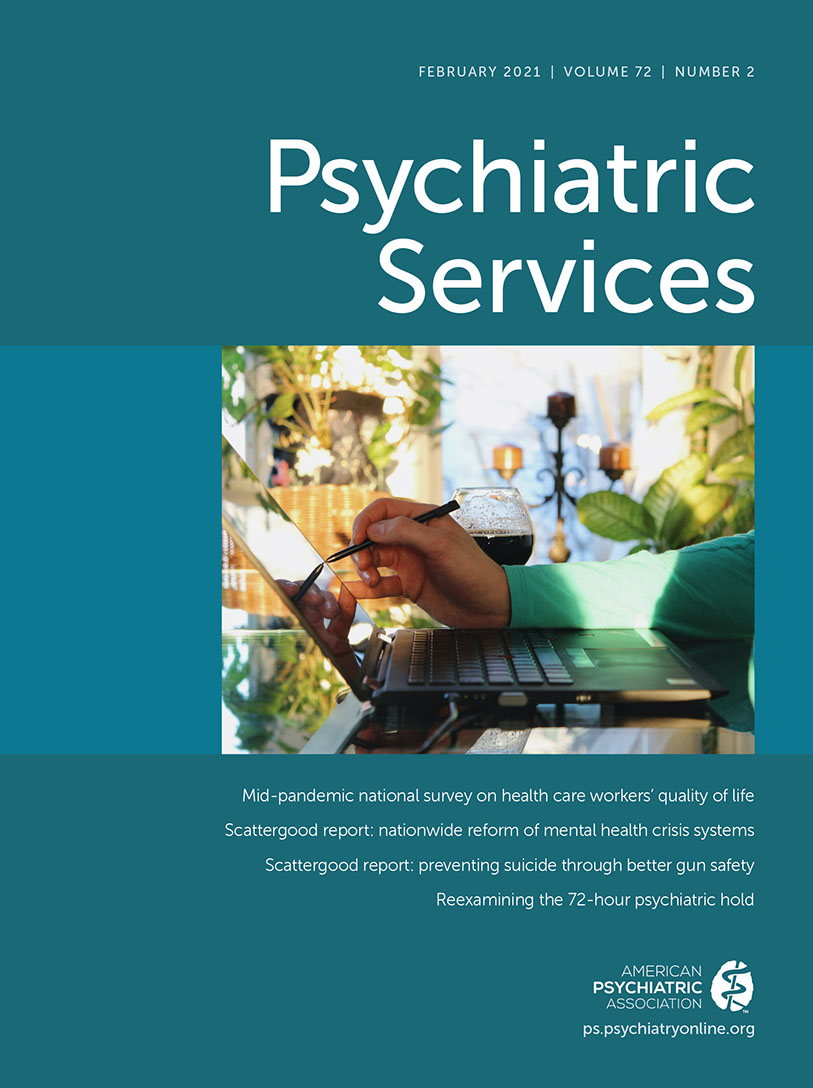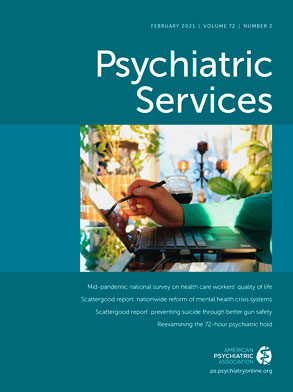Jobs for People With Mental Health Conditions: Trends and Prospects
Abstract
Objective:
Methods:
Results:
Conclusions:
HIGHLIGHTS
Background
Methods
Data
Measures
Analyses
Results
| Job skill class | 1997–1999 | 2006–2008 | 2015–2017 | Percentage point change |
|---|---|---|---|---|
| Nonroutine analytical | 7.1 | 9.2 | 9.9 | 2.8 |
| Nonroutine interpersonal | 10.2 | 12.4 | 16.4 | 6.2 |
| Nonroutine manual | 14.0 | 11.8 | 9.3 | –4.7 |
| Routine cognitive | 19.0 | 14.8 | 15.3 | –3.7 |
| Routine manual | 12.5 | 10.1 | 10.0 | –2.5 |
| Not working | 37.3 | 41.8 | 39.1 | 1.8 |
| Job skill class | 1997–1999 | 2006–2008 | 2015–2017 | Percentage point change |
|---|---|---|---|---|
| Nonroutine analytical | 4.0 | 3.9 | 4.0 | .0 |
| Nonroutine interpersonal | 6.2 | 6.1 | 8.1 | 1.9 |
| Nonroutine manual | 10.1 | 7.2 | 6.7 | –3.4 |
| Routine cognitive | 13.8 | 11.8 | 12.1 | –1.7 |
| Routine manual | 9.7 | 7.5 | 6.9 | –2.8 |
| Not working | 56.4 | 63.5 | 62.3 | 5.9 |
| Job skill class | 1997–1999 | 2006–2008 | 2015–2017 | Percentage point change |
|---|---|---|---|---|
| Nonroutine analytical | 4.5 | 3.8 | 3.9 | −.6 |
| Nonroutine interpersonal | 4.2 | 6.6 | 6.5 | 2.3 |
| Nonroutine manual | 16.6 | 13.9 | 12.2 | –4.4 |
| Routine cognitive | 7.1 | 5.5 | 7.3 | .2 |
| Routine manual | 12.4 | 8.5 | 7.7 | –4.7 |
| Not working | 55.2 | 61.7 | 62.4 | 7.2 |
| 1997–1999 | 2006–2008 | 2015–2017 | Percentage point change | |
|---|---|---|---|---|
| Nonroutine analytical | 3.6 | 3.9 | 4.0 | .4 |
| Nonroutine interpersonal | 7.3 | 5.9 | 9.1 | 1.8 |
| Nonroutine manual | 6.4 | 2.9 | 3.2 | –3.2 |
| Routine cognitive | 17.5 | 15.8 | 15.1 | –2.4 |
| Routine manual | 8.1 | 6.9 | 6.4 | –1.7 |
| Not working | 57.1 | 64.6 | 62.2 | 5.1 |
Discussion and Conclusions
Limitations
Policy Implications
References
Information & Authors
Information
Published In
History
Keywords
Authors
Competing Interests
Funding Information
Metrics & Citations
Metrics
Citations
Export Citations
If you have the appropriate software installed, you can download article citation data to the citation manager of your choice. Simply select your manager software from the list below and click Download.
For more information or tips please see 'Downloading to a citation manager' in the Help menu.

